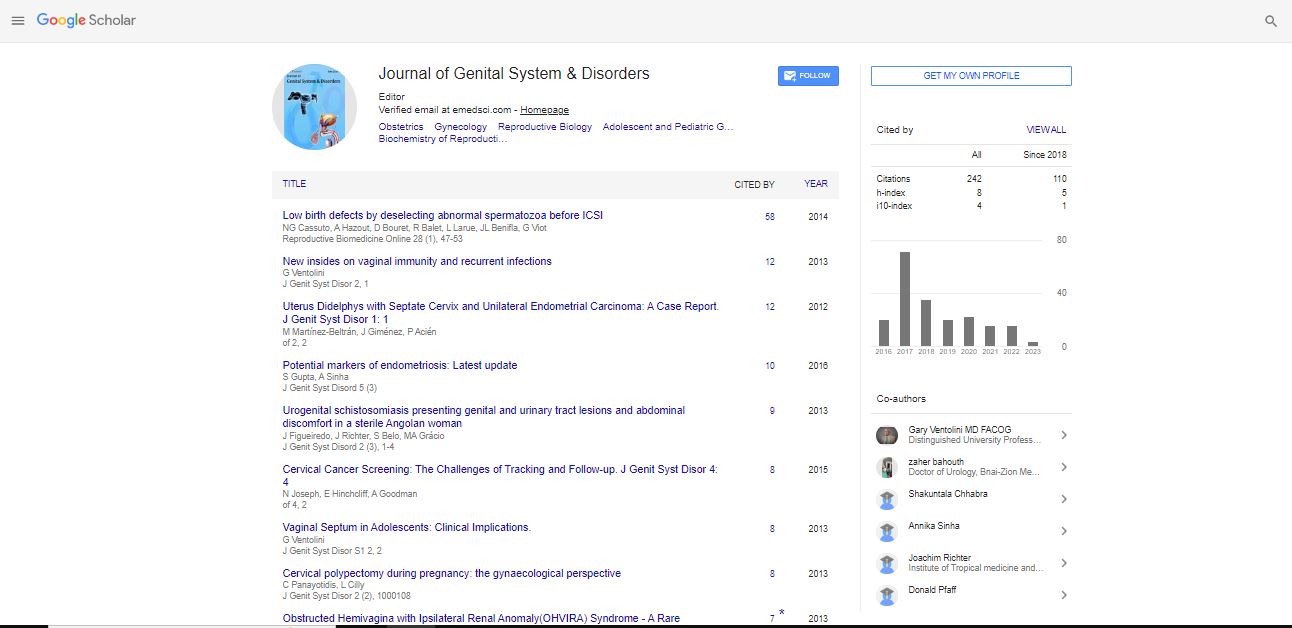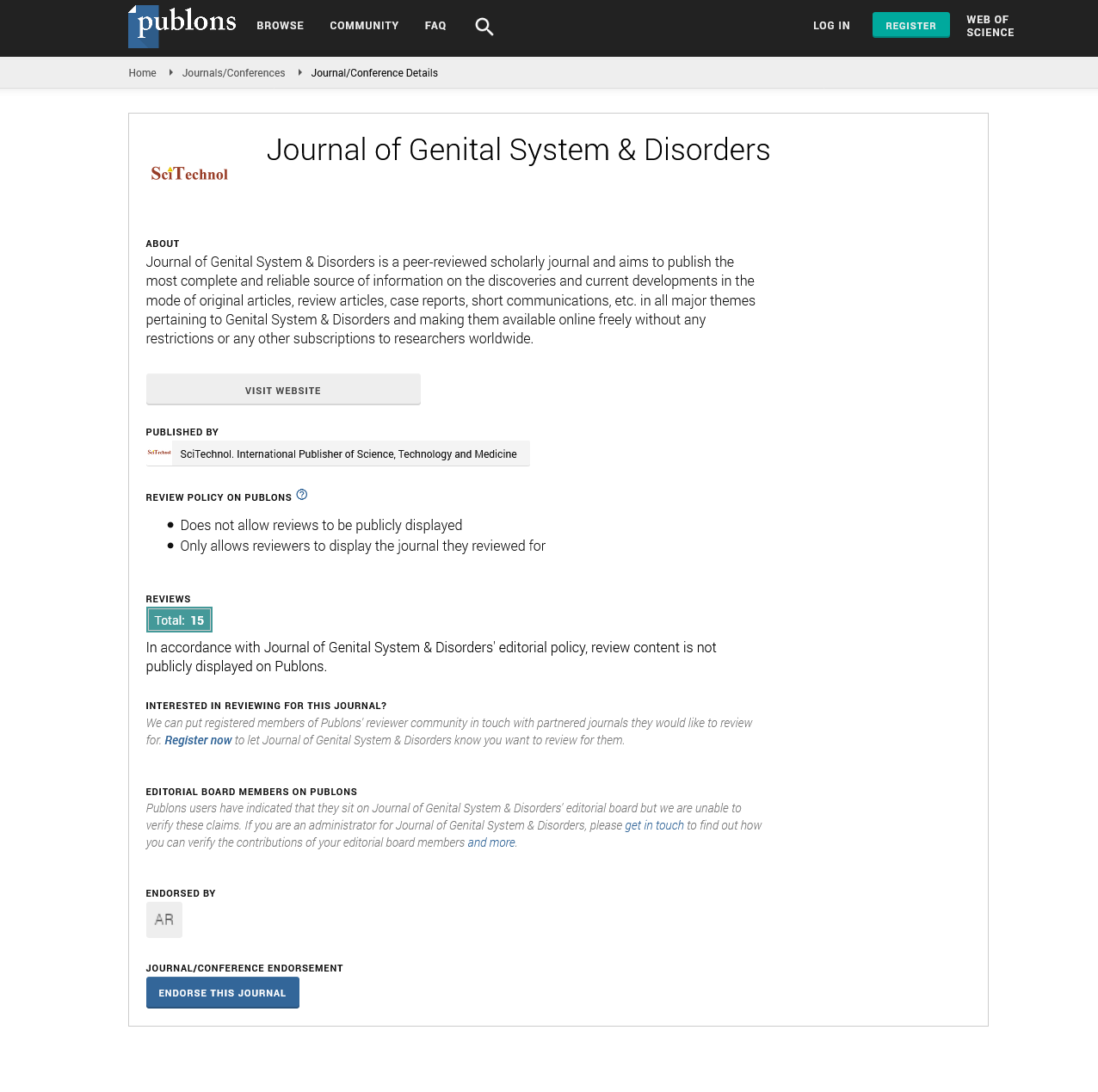Commentary, J Genit Syst Disord Vol: 12 Issue: 2
Herbal Medicines in Andrology Cardiovascular Health
Jan Kimala*
Department of Cardiology, University of Ulsan College of Medicine, Seoul, Korea
*Corresponding Author: Jan Kimala
Department of Cardiology, University of
Ulsan College of Medicine, Seoul, Korea;
E-mail: Kimala@gmail.com
Received date: 11 January, 2023, Manuscript No. JGSD-23-86804;
Editor assigned date: 13 January, 2023, PreQC No. JGSD-23-86804 (PQ);
Reviewed date: 27 January, 2023, QC No. JGSD-23-86804;
Revised date: 18 April, 2023, Manuscript No. JGSD-23-86804 (R);
Published date: 25 April, 2023, DOI: 10.4172/2325-9728.1000278
Citation: Kimala J (2023) Herbal Medicines in Andrology Cardiovascular Health. J Genit Syst Disord 12:2
Description
There are currently human recombinant gonadotropin products available, which are significantly more pure than urine products but more expensive. As long as there is a gonadotropin shortage, urinary gonadotropins will continue to be the most often used therapies for secondary hypogonadism related infertility. Despite requiring more frequent injections, some men with secondary hypogonadism choose hCG therapy over testosterone treatment because it is more affordable (purified urinary hCG preparations cost about the same as testosterone gels), SC injections are more bearable than IM injections, testis size is typically larger, and spermatogenesis is increased. In comparison to men with ED of non-arteriogenic origin, individuals with arteriogenic ED had significantly higher ADMA and SDMA concentrations, and both subgroups had much higher values than controls.
The only subgroup with a negative correlation between ADMA and IIEF score was the arteriogenic ED category. L-arginine did not significantly differ between the two ED subgroups or between each of the two ED subgroups and controls. Cardiovascular health is the state of the blood vessels and the heart. Cardiovascular disease refers to a group of conditions that affect the heart and blood vessels, including coronary heart disease, stroke, heart failure, heart arrhythmias, and problems with the heart valves.
The primary behavioral risk factors for heart disease and stroke include unhealthy diet, inactivity, use of tobacco products, and alcohol abuse. As a result of behavioral risk factors, people may develop high blood pressure, high blood sugar, high blood lipids, as well as overweight and obesity.
Even though coronary heart disease has no known cure, medicines can help manage the symptoms and reduce the risk of complications like heart attacks. Among the possible therapies include alterations in lifestyle, such as consistent exercise and giving up smoking. The term "heart disease," usually referred to as heart and blood vessel disease, covers a wide range of conditions, many of which are linked to atherosclerosis. When the artery walls get clogged with a substance called plaque, a condition called atherosclerosis develops. As a result, the arteries get more clogged, which complicates blood flow. If a blood clot forms, blood flow could become restricted. This could cause a stroke or a heart attack.
When a person has their first heart attack, the majority of them survive and go on to lead normal lives, working for many more years. However, you will need to change your lifestyle if you experience a heart attack. Your doctor may suggest various medications and lifestyle changes depending on the severity of the heart damage and the level of underlying heart disease that caused the heart attack. It has been established that lowering the risk of cardiovascular disease entails giving up smoking, reducing salt intake, increasing fruit and vegetable consumption, exercising frequently, and avoiding excessive alcohol use. Health policies that support environments where healthy options are both affordable and accessible are essential if people are to acquire and maintain healthy behaviours.
In addition, the person may experience nausea or vomiting, light headedness or dizziness, problems breathing or a feeling of being out of breath, a cold sweat, and a change in skin colour. Shortness of breath, nausea, and back or jaw pain is more common in women than in men.
 Spanish
Spanish  Chinese
Chinese  Russian
Russian  German
German  French
French  Japanese
Japanese  Portuguese
Portuguese  Hindi
Hindi 
